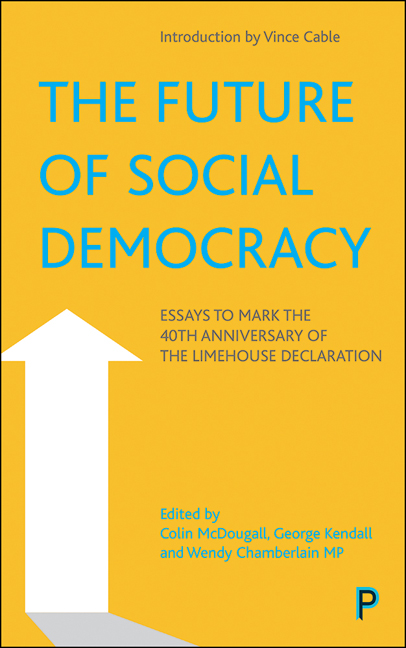Book contents
- Frontmatter
- Dedication
- Contents
- Notes on the authors
- Foreword
- Introduction: what are the priorities for social democrats?
- One After the failed alternative vote referendum, how can electoral reform have a future?
- Two How could a government actually deliver more housing?
- Three How will technology change the future of work?
- Four Can better public ownership promote efficiency and social justice?
- Five How do we grow the economy without damaging the environment?
- Six How can global free trade work for everyone?
- Seven Towards a social democratic foreign policy?
- Eight How do we deliver social justice through education?
- Nine What is the Social Democrat Group?
- Index
Five - How do we grow the economy without damaging the environment?
Published online by Cambridge University Press: 05 January 2022
- Frontmatter
- Dedication
- Contents
- Notes on the authors
- Foreword
- Introduction: what are the priorities for social democrats?
- One After the failed alternative vote referendum, how can electoral reform have a future?
- Two How could a government actually deliver more housing?
- Three How will technology change the future of work?
- Four Can better public ownership promote efficiency and social justice?
- Five How do we grow the economy without damaging the environment?
- Six How can global free trade work for everyone?
- Seven Towards a social democratic foreign policy?
- Eight How do we deliver social justice through education?
- Nine What is the Social Democrat Group?
- Index
Summary
In the aftermath of the Second World War, the aim of economic policy for a social democrat – and liberal – in the UK was simple. It could be summed up by the phrase ‘full employment in a free society’ – the title of William Beveridge's 1944 plan for a post-war world.
In 1945, the devastation caused by humankind was on itself, not other elements of the natural world. However, the success of Beveridge's ideas and Keynesian macroeconomic policies led to an unprecedented increase in per capita income, life expectancy and population. The figures are extraordinary. World population in 1950 was 2.5 billion. It is now 7.7 billion. Global life expectancy has increased from 46 to 71, and income per head has increased from US$3,500 to US$17,000. No period in human history has seen such rapid and widespread increases. Furthermore, the world got used to the idea that economic growth – measured by gross domestic product (GDP) – would grow in developed countries by at least 2 per cent a year and in less developed countries by a lot more.
Growth was seen as desirable, not just because it increased the total stock of wealth and the flow of income, but because it offered the possibility of redistribution towards the poorer without requiring a fall in the absolute wealth and income of the most affluent. The benefits of growth, which included an enhanced welfare state and the provision of a large amount of social housing, could be channelled downwards. This idea permeated social democratic thought and was borne out by falling income inequality in the post-war period. It was a most benign scenario. Falling income inequality was only put into reverse when Margaret Thatcher used industrial strife and high inflation as pretexts to bear down on the public sector and laud everything private.
When doubts began to surface about whether such growth was compatible with the sustainability of the natural environment – as they did in the 1960s – they were poohpoohed by most social democrats.
- Type
- Chapter
- Information
- The Future of Social DemocracyEssays to Mark the 40th Anniversary of the Limehouse Declaration, pp. 73 - 82Publisher: Bristol University PressPrint publication year: 2021

